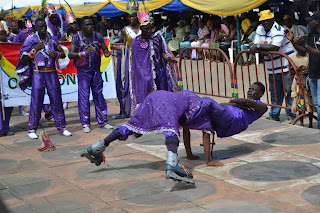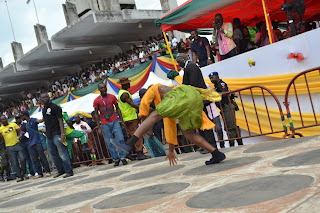Many my students have asked me on how to begin a life in photography. I end up telling them that, why not get to know what it takes to roll the game than just getting a life.
Today's lecture will be focusing on choosing yourself a good cam.
Whether you want a DSLR or a compact camera or a pocket camera, there are so many models to choose from, at a bewildering range of prices, where do you start? Well, the way I choose any new toy these days is to start at the end. What do you want it to do?
Err . . . take pictures. Yes but what kind of pictures and what are you going to do with them? The other burning question is how much are you prepared to learn? And, of course, how much are you prepared to pay?
As you are reading this and have actually made it to paragraph two, I think we can assume that you are prepared to learn at least a little. So what do you want to do? Do you want something that you can keep in your pocket at all times so you can snap the kids?
Do you want a camera that will allow you to take pictures in any lighting conditions from any distance (with the right gadget screwed on the front of course)? Is this going to be a hobby or just some quick snaps?
I haven't seen any cameras on sale in recent years that do not have a fully automatic 'point and shoot' mode, most will automatically switch on the flash for you when it is needed so you may wonder why we need all the other manual and semi automatic modes and an instruction book to make your head spin.
The Learning Curve
The answer is that, although the camera can produce good exposures most of the time, there are times when, to get the results we want, we have to apply a little know-how and select more appropriate settings than the camera would automatically choose.
Before choosing a camera with lots of knobs and dials it is a good idea to consider whether you are ever going to bother to learn what they are all for. I've been around cameras for many years now, and I'm still learning what all the settings on my latest camera actually do. I never bother to learn how to do something until I need to. So there are certain obscure settings that I have yet to find a use for. Of course it would be nice if we could choose just the buttons we need and have each camera custom made for us but in the real world all we can do is choose the level of control based on how much we think we might want to get involved. Generally speaking an SLR will have more knobs, dials and menus than a compact camera which will give you more control over your pictures but will have a much steeper learning curve.
SLR or Compact?
All the cameras on the market can be categorized into a few simple groups. The most important two groups are fixed lens and interchangeable lens. The fixed lens cameras tend, with a few exceptions, to be smaller, lighter and more pocketable, therefore you are more likely to have it with you when you need it. Well that's the theory anyway but I think we can say that you are more likely to be bothered to take it with you on that outing to the beach or the zoo.
However even with today's zoom lenses, which are pretty wonderful, you will often find that you are too far away or too close to get the picture you want so you need to be able to change the lens for a longer telephoto or a wider angle. The other major advantage of these single lens reflex (SLR) cameras is that you are actually looking through the lens instead of a separate viewfinder so what you see is what you get, although this is less of an issue now that we can review our photos on the screen of the digital camera. The down side of these SLR cameras is that you very soon end up with quite a heavy bag of gadgets and are less likely to carry it everywhere with you. However much I yearn for a compact camera for it's handiness I know I would be frustrated by it's shortcomings so for me the choice is SLR every time.
Digital or Film?
Do they still make film cameras? Oh yes they do and I wouldn't mind betting that they continue to do so for many years and I wouldn't mind betting that at some time in the future there will be a retro backlash and a large number of 'serious' photographers will return to the darkroom. Some will probably claim that they have never used digital at all, ever.
Nothing could be further from the truth actually, I am now fully converted to digital and loving it. I am going to make the pros and cons a separate discussion that will be posted soon but, for now, I'll just say that I am completely sold on digital and do not feel that I have lost anything significant by changing.
Which brand?
This, of course, is the big question that you really want an answer to and you know that nobody is going to give you one. If you ask anyone who already has a camera most will support the brand of the camera they have unless they have had some trouble with it, even then people are very forgiving. I think the reason for this is that people think that, if they have made the wrong choice it is because they have somehow failed, and they are not going to admit their failure.
Back in the 1980s I had a camera shop in England and at the time a lot of people, who already owned an SLR, were buying compact cameras 'for the wife'. They would ask me which brand was the best and, if I didn't already know, I would discreetly try to find out which brand of SLR they owned, then I would recommend the same brand of compact camera.
Trying to sell them another brand was like telling them they had made a wrong choice when buying their old camera and was likely to lose me a sale. So I'd better have a really good reason for not recommending the Canon, Olympus, Nikon, Pentax or whatever and I didn't have one. All of the well known brands produce similar cameras at similar prices and, by and large, you get what you pay for.
I will stick my neck out a little bit here and say that in my humble opinion the manufacturers who make the best film cameras the Japanese Nikon, Canon, Olympus, Pentax, Minolta and the German Contax and Leica seem to make the best digital cameras.
I would not be too happy to put my trust in brands whose traditional expertise is in other fields when there are such good cameras available from the traditional sources. I will probably get a lot of hate mail from people who have bought Sony cameras or Hewlett Packard and are perfectly happy with them.
If I wanted a printer Hewlett Packard would be top of my list and I am a huge fan of Sony video and TV equipment but my first choice for a digital SLR would be one of the names mentioned above. Right now in 2012 Olympus have fallen on hard times but we’ll see what happens there.
How Many Pixels?
Until recently the quality of a digital camera was measured by how many pixels it boasted. Now we have cameras with tens of millions of them and it has ceased to be the most important test of quality. In the real world the number of pixels you need depends on how big you want to print your pictures. If you mainly want postcard size or A5 then I would consider 6 to 10 million pixels to be perfectly adequate. Even at A4 size I would be hard pushed to tell the difference between my 10 million pixel camera and my 18 million pixel camera. Don’t forget though that your framing in the camera may not always be perfect so you may be enlarging only a portion of the image. Top of the range camera sensors seem to have settled down now (in 2012) at around the 16 to 20 million pixel mark, and maybe we finally have enough of them. The main difference between a pro camera and an amateur camera is that the sensor is bigger and therefore each pixel is bigger but there are roughly the same number of them, the bigger pixels certainly do seem to produce better quality, smoother pictures.
I find the main advantage of having more pixels is being able to shoot at faster
ISO settings and still get decent definition. This really helps to freeze the action in sports photography and other kinds of fast moving subjects. You get better definition at all
ISO settings of course but, be warned, you need a good quality lens to really see the difference.
However we do sometimes seem to get too hung up on image quality, a fellow photographer once observed that photographers tend to smell pictures rather than look at them, by which he meant that they were more interested in the graininess and sharpness of the print than the actual content of the image itself.




































